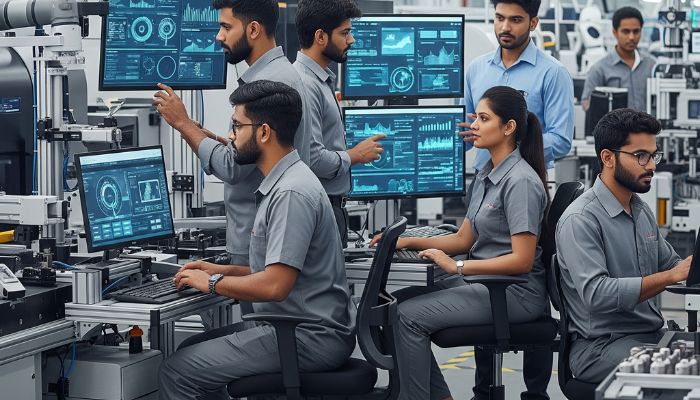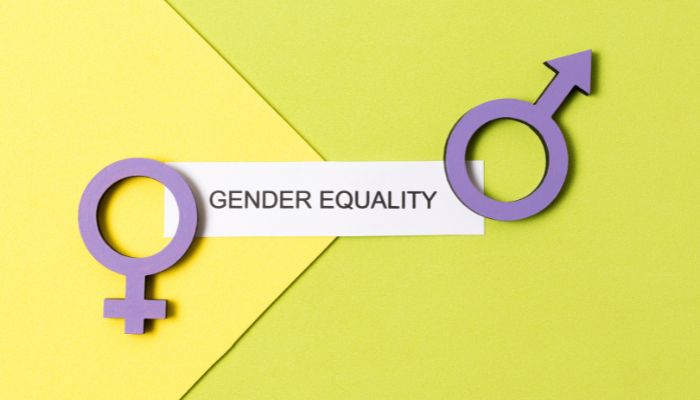The business world witnessed a plethora of unforeseen changes as an aftermath of the pandemic. Changes that aided organizations to sail through the concurrent fall of the economy and political divisiveness effectively. Even though the country is yet to return to normalcy, organizations must start looking at the future of work by incorporating the new normal, the transformations, and strategies undertaken during the pandemic. There’s no doubt that technology emerged as a redeemer for businesses. However, the leaders mustn’t forget the promptness of their employees and how swiftly they adapted to transformations and strategies to sustain revenue turnovers.
HR leaders must start accepting and classifying the new changes, the changing work scenario, and employee experiences to thrive in the future of work. If we recall the pandemic situation, leaders went through a series of damage control stages. First, they responded to potential chaos and made bold decisions to change and adapt. Following this, they reflected on missed opportunities and failures to draft new strategies and reboot. However, the economy continues to be dynamic today as the businesses recover and adapt through choppy waves of the pandemic. And it is about time the HR leaders address the elephant in the room: the future of work.
You might also be interested to read: The Future Of Work Is Here And Now: It’s Hybrid
What is the future of work? Is it technology and the inclusion of automation? Yes, indubitably, but the future of work is also about the people of the organization. The employees stood through the highs and lows of the organization despite feeling burnt out and isolated. The HR leaders must focus on the people as they’ll help the business thrive in the future of work, besides technology. Even though the pandemic loosened the white-collar norms by introducing a hybrid work model, new technologies, and digital transformation, the employees lost the sense of belongingness and motivation to bring their best to the table.
Once past the recovery phase and as the workforce begin to return to the cubicles, the HR leaders must reboot their strategies to support, train, and empower its people. Organizations should prioritize people over purpose. Invest in workshops and training to restore the synergy between teams and encourage employees with more team-building and brainstorming sessions. The more resilient the workforce will be, the more it’ll help the business thrive in the future of work.
Re-introduce the objectives of the business by adding a humanized perspective for your employees to connect and deliver. The team leaders should encourage people to think of creative solutions to problems or assigned projects rather than following the patented patterns pre-pandemic. Indirect motivation tends to work better sometimes than motivational workshops. The freedom to creative thinking and innovation will indubitably cement the feeling of responsibility towards their and the organization’s goals. Moreover, it will help them grab on to newer perspectives and possibilities that’ll aid the business to prosper.
And to shape this future of work successfully, the HR leaders can bring a shift in the organization by realigning the work, workforce, and workplace today. Here’s how:
Work: Post-pandemic, work needs a new meaning for people to relate, connect, and deliver. With technology, automation and digitalization evolving and establishing with rapidity- leaders must find a way to add more meaning to work. Although not immediate, the future of work will potentially be machine-powered. According to the World Economic Forum report in 2018, although 1 million people might lose jobs, 1.75 million might gain as these machines will augment the working experience rather than replacing manual work. In context to the future of work, the HR leaders must inculcate more technology and tools that will help employees elevate their skills and working patterns. The time-honored circle of humans revolving around work should be replaced with work revolving around humans. Despite technology revolutions, employees should be given the freedom to bring their talent, creativity, and perspectives to the table, thus adding more meaning to work.
Workforce: With the evolving technology and change in traditional work patterns, another sector is witnessing a rapid change: the workforce. Millennials are taking over managerial posts and making most of the workforce today. They want to go beyond the traditional working patterns and explore new opportunities. Organizations should explore their capabilities by helping them discover new skills. HRs must arrange reskilling and upskilling workshops, enable new technologies, job swaps, or cross-training to help employees explore new perspectives and talent that’ll be lucrative for the organization in the future. Besides this, HR leaders must open their workforce to gig workers. The gig economy witnessed a massive spike as several companies opted for freelance workers during the pandemic to sustain revenue turnovers and lessen the burden on internal teams. Moreover, hiring more gig workers will help the internal teams explore new and different opportunities in the organization.
Workplace: Pandemic brought about a plethora of changes. Some were uncalled for, while some embraced with glee. One of them was remote working or the hybrid working model. With the positive impact of remote working on both the employees and the organization, HR leaders must accept that the new normal is here to stay. Workplaces are no longer cubicles or office spaces! Going forward, a flexible working environment is here to stay, and HR must enable more digital capabilities and cultures to establish amicable synergy amongst the team. Furthermore, hybrid models focus more on an employee’s needs and preferences to allow a flexible working environment, which will inadvertently help employees deliver their best. However, since communication gaps, isolation, or burnout can be the aftermath, the organization must enable technologies and digital platforms to counter these hurdles effectively.
The future of work inadvertently depends upon the paths chosen by the leaders to help their business thrive. They can either include more technology and tools to augment the working conditions or take a more humanized strategy to encourage their employees to increase resilience and productivity. Although the business world is still sailing in the recovery phase, the HRs must start thinking about their next move, and it should be indisputably focused on the employees. Technology is the future, yes, but running them will affect the people of the organization. And people over purpose should be the next big move in the business world.
References:
- What is the future of work? | Deloitte | Jeff Schwartz, Steve Hatfield, Robin Jones, and Siri Anderson | April 1, 2019
- Thriving in the Future of Work Means Focusing on Your People | Harvard Business Review | April 28, 2021
- The Future of Jobs Report 2018 | World Economic Forum
You might also be interested to read:






